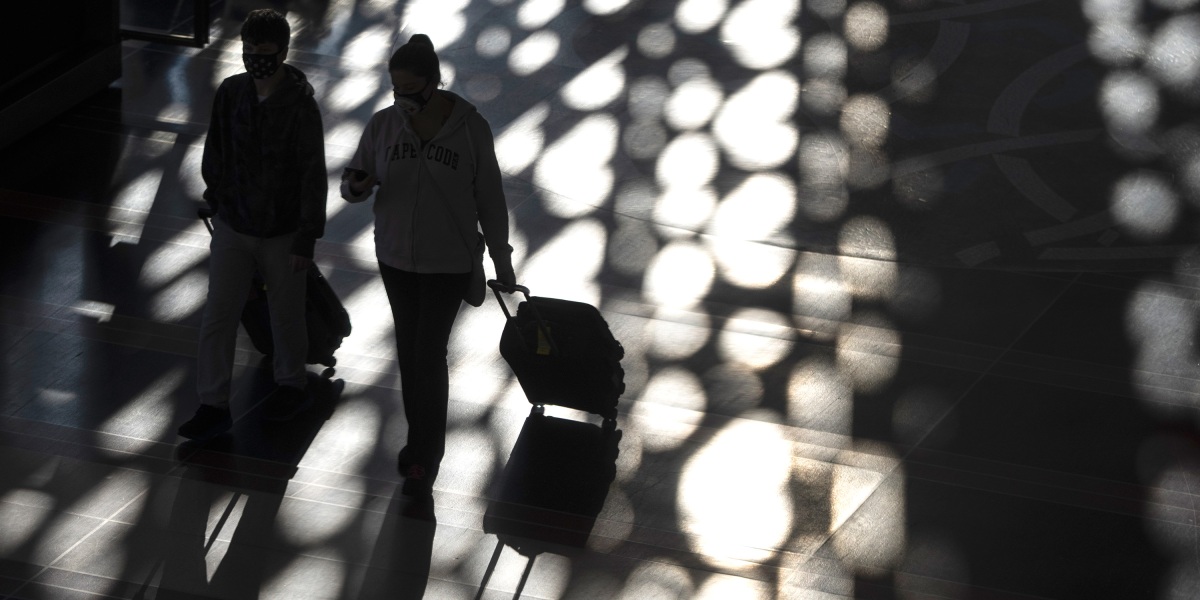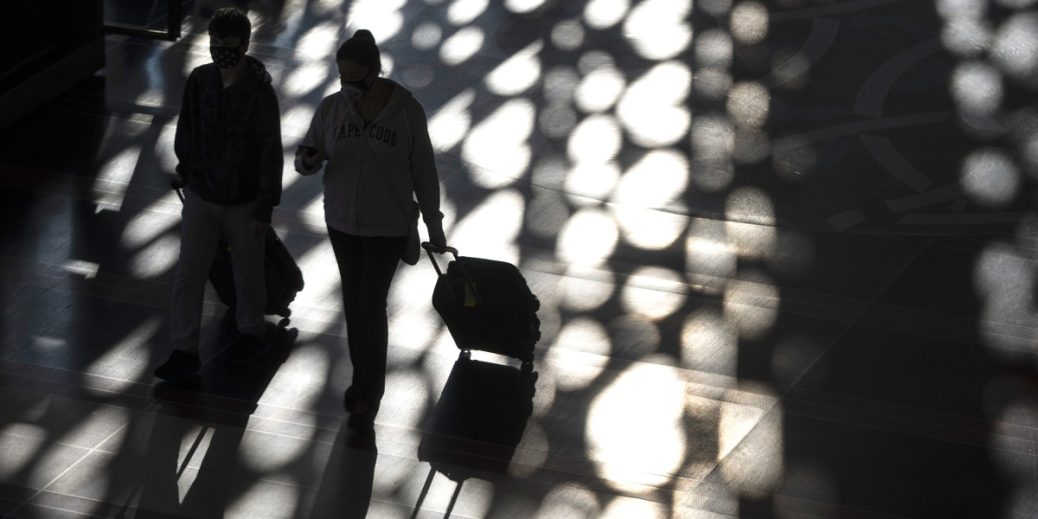
The experiment: It’s hard to test transmission in a lab, so this is an experiment that happens in the real world. Researchers will use sequencing tests to track what fraction of the actual covid-19 cases they see are due to omicron. If that percentage starts growing, and if similar growth is seen in different countries, it will be a sign that omicron is transmitted faster.
That’s what happened with the alpha variant, which appeared in the United Kingdom in 2020. By December of that year, it accounted for a rising share of British cases, and within a few months it also came to dominate case loads in the rest of Europe and in the US. Later, alpha was displaced by delta. With both of these strains, alpha and delta, it took about two to four months from the time they were introduced for them to account for most cases. If omicron follows suit, it will be the dominant strain in early 2022.
“When we see replacement, it’s strongly suggestive of a transmission advantage,” says Thiel. “But if it only happens in one place, it could be due to chance.” He says the rise of omicron in South Africa, on its own, doesn’t prove whether the variant is more transmissible.
How soon: Firm evidence for higher transmissibility could take a month or more to acquire. That’s because it takes about five to six days for a newly infected person to grow enough virus to infect others. And to get a grasp on whether omicron is being transmitted faster, researchers will need to observe multiple rounds of infection and spread.
Such research can be accelerated if researchers extend the timeline backward by sequencing old samples. Already, doctors in Nigeria have said they’ve found omicron in a banked covid-19 sample in that country. Dutch authorities also found omicron cases there from mid-November. These could offer earlier data points.
What’s next: It’s not only the SARS-CoV-2 virus that’s changing; so has the human stage where the pandemic is playing out. Omicron will face more diverse conditions than any variant yet, including countries where nearly everyone is vaccinated, countries using different vaccines, locales where most people have had covid-19 already, and “zero-covid” nations like China and New Zealand. That means omicron might take hold in some areas but fizzle out in others.
Does omicron cause more severe disease?
The worry: Initially, some South African doctors said the symptoms caused by the new variant seemed milder, but then came reports of more hospital beds filling up. Right now, no one knows whether omicron causes worse symptoms or not.
The issue is that omicron is so new that most cases are only a week or two old, while it often takes several weeks for covid-19 to cause severe problems or death. “It’s too early to say something about disease severity. So far, we can’t really say anything,” says Christian Althaus, an epidemiologist in Bern.
The experiment: To measure disease severity, researchers can expose lab animals like mice or monkeys to omicron, but the final answers will come from real-world data on people, including doctor’s observations, hospital records, and death counts.
How soon: Whether omicron causes worse disease, or different symptoms, is probably the question that will take longest to answer—likely a couple of months.
With all the uncertainty around omicron, and the possibility that vaccines won’t work so well, researchers are reminding the public about tactics they say will stunt the spread of any variant, like isolation, social distancing, and wearing masks. “There is no variant against which these interventions won’t work,” says Thiel.
He also says omicron is a sign of things to come. “In the next months or years, it will be rough. There will be new variants; we should expect that,” he says. “But stock markets should not respond to all variants in a scared way. That is the future, and we will have to cope with that.”






Recent Comments